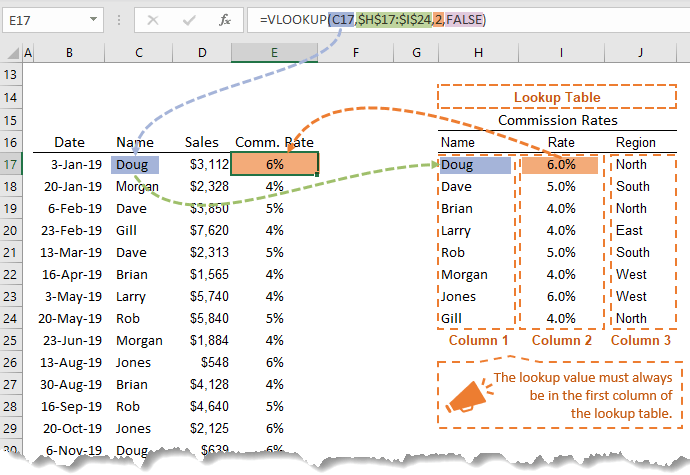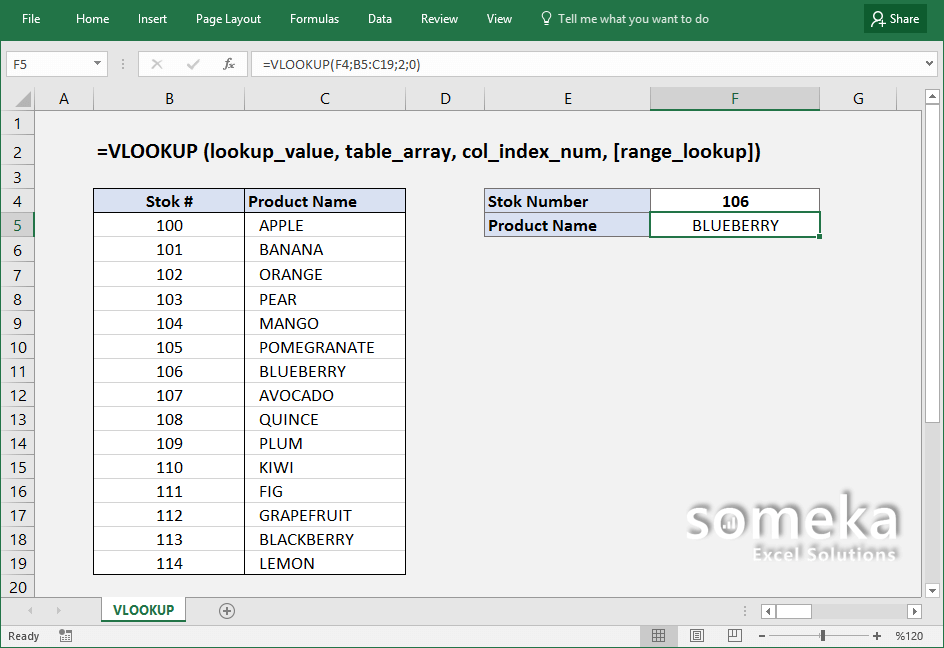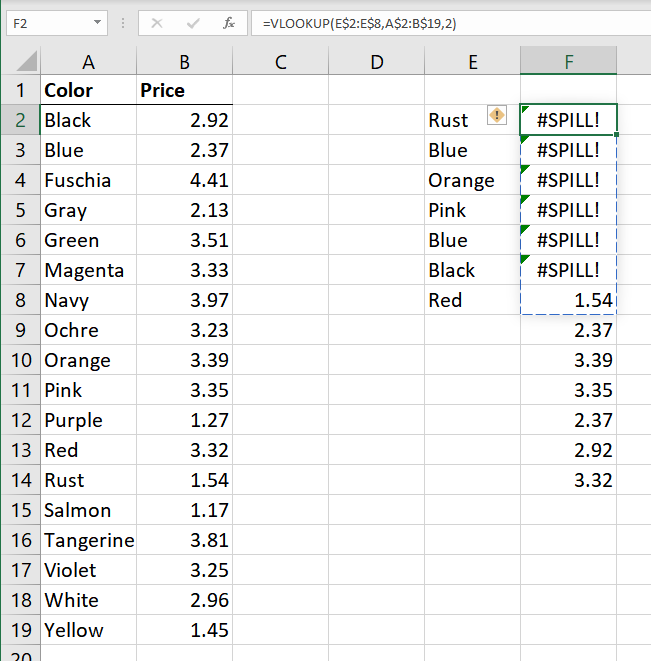
In the example, we input 2 and 3, the order of “Age” and “Occupation” columns in the cell range. This formula will search “Moka” in the first column of the inputted cell range and pull data on the result column.

In the example, we can see the reference value there is “Moka”. The practice of all this explanation can be seen in the VLOOKUP formula example above. If not, then the result of your VLOOKUP excel formula can be wrong or even produce an error. It is important to remember that if the input is TRUE, you must sort the first column in ascending order. FALSE means if the exact match cannot be found, then it will produce an error. TRUE means if an exact match cannot be found, it will look for the smaller nearest value to the reference value. You can input TRUE/FALSE here with the default is TRUE if you don’t input anything. Its last optional input, the lookup nature, is also important to understand. If there is more than one match in the first column, it will take the row position of the top one. When found, VLOOKUP will take its row position to your result column. The way this formula works is: it will look at your cell range’s first column and search your reference value there. Those inputs are the reference value, the cell range for the lookup process, the result column order, and the lookup nature. The way to use this formula itself is by giving it the inputs explained in the previous tutorial section correctly. It will show its usefulness, writing, and result.įrom the example, it is clear how VLOOKUP can be used to find data vertically. The following will give and explain the first VLOOKUP example. VLOOKUP with 2 or more search criteria/reference values.VLOOKUP with the nth match (not the first match).VLOOKUP with the lookup reference value that is a part of a cell content.VLOOKUP with a reference table on a different file.VLOOKUP with a reference table on a different sheet.Anticipate an error in VLOOKUP: IFERROR VLOOKUP.

#How to use vlookup in excel 2016 manual



 0 kommentar(er)
0 kommentar(er)
